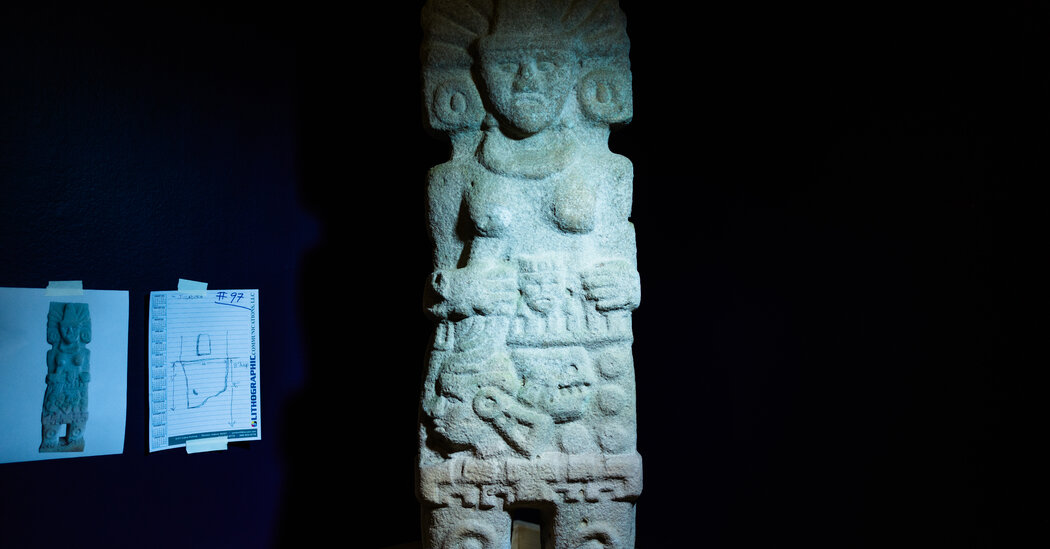The statue will be part of “Ancient Huasteca Women: Goddesses, Warriors and Governors” at the National Museum of Mexican Art in Chicago.
The six-foot woman, carved in pale stone, wears a peaked headdress, circular earrings and the wide hip belt and kneepads of an ancient Mesoamerican athlete. Her expression is fierce, her pose triumphant. In her right hand, she grips the severed head of a sacrificial victim by the hair.
The sculpture is the first life-size representation of a ritual ballplayer found to date in the Huasteca, a tropical region spanning parts of several states along the Gulf Coast of Mexico.
Like virtually every other Mesoamerican society, the inhabitants of the Huasteca played what is simply known today as “the ballgame,” in the time before the Spanish conquest. Despite its name and ties to modern soccer, this game was more sacred rite than sport.
For the players, who bounce a solid, dangerously heavy rubber ball off their hips, it was a means of communing with the gods, one that sometimes culminated in human sacrifice.
The ballplayer will be among the most important artifacts in an exhibit, “Ancient Huasteca Women: Goddesses, Warriors and Governors,” at the National Museum of Mexican Art in Chicago, opening Friday. This is the first time the piece, which was discovered by landowners about 50 years ago near Álamo, Veracruz, has been on public display.
“A lot of people who study ancient Mesoamerica will be shocked when they see this piece,” said Cesáreo Moreno, the museum’s visual arts director and chief curator.
